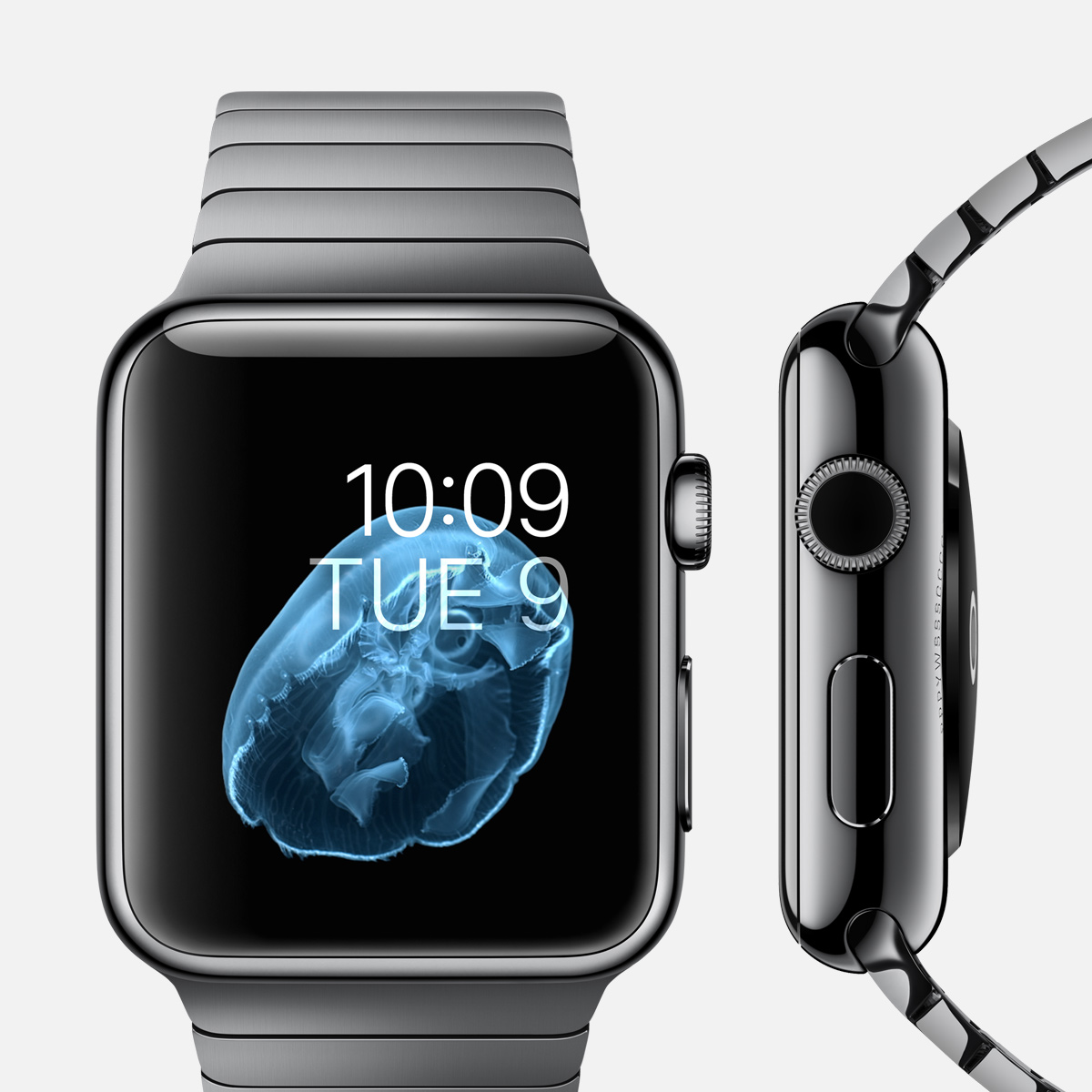[photo: Apple]
It’s a well known yarn that several years ago Apple was split between those that liked skeuomorphism (Steve Jobs, Scott Forstall, others) and how it made otherwise cool and modern devices warm and relatable to large swaths of the population and those that looked down upon their mid-century modern noses at it and proclaimed it little more than sentimental kitsch and unnecessary post-modern ornament (Jony Ive and others). It was an unfair battle really, since one side had Steve Jobs, the company’s Adam, Moses, and Jesus rolled up into a pair of loose fitting jeans and a black mock turtle neck.
But once Steve died, the tables turned and those who favored skeuomorphism were chased outta Dodge leaving Ive and team to tear the wallpaper down and start all over; you won’t find a simulated wood grain, a fake leather stitch, or an old tube television anywhere.
So with skeuomorphism apparently killed, Ive and team set out on their next big challenge–to design a wearable device that could pair with the iPhone in new and interesting ways. Like the Fitbit and other fitness devices, it could track steps and heart rate. Like Android Wear devices, it could act as an additional, more convenient interface to the iPhone and the cloud, sending message notifications, event reminders, weather reports, and provide turn by turn navigation. Heck, you can even pay for your double shot mocha frappuccino without taking your iPhone out of your pocket. How cool is that?
And, by the way, you can tell the time with it. But just like you can make phone calls with your iPhone, that’s just a fraction of its real capabilities.
We’ve been spoiled over the years by Apple showing us time and time again how “Think Different” is part of their corporate DNA. From the very first Bondi Blue iMac that singlehandedly kickstarted the whole all-in-one computer trend, to making digital music mainstream with the iPod, to getting rid of buttons and sliders and styluses in making the iPhone, Apple has a design track record that the envy of the industry.
So when given a chance to think differently about this still-new category of wearables, why did Apple make this smart, sensor rich, networked computer, this extension of a person’s digital lifestyle look like a watch, complete with a “digital crown”? Skeuomorphism! Ironic, isn’t it?
It’s OK for Motorola and LG to make Android Wear watches with UX-challenged but cool looking round faces. They aren’t Apple. It’s ok for Sony to make Smart Watches that are barely distinguishable from Casios. They aren’t Apple. But after the iMac, the iPod, the iPhone, and the iPad, the Watch just doesn’t cut it.
Why is this important? I’m sitting here with a Sony SmartWatch 3 on my wrist. I just got it because I got tired of carrying my phone on runs in order to listen to music and track my route with Strava. The SmartWatch 3 has a GPS and Bluetooth and works integrates with Strava and Google Play Music so now I head out the door with the watch and Bluetooth headphones and everything is right with the world. It also has one of the best batteries in the smartwatch business at the moment. But it’s thick (10mm) which makes it tough to fit under a motorcycle jacket or a dress shirt. It’s understandable, since that 10mm incorporates a touchscreen and a SOC and a battery, each stacked on top of each other, which they have to be if you want to design something that looks like a watch. So if the Apple Watch is too thick, it’s because they wanted it to look like a watch. And if the Apple Watch battery life disappoints, it’s because they didn’t want the device to be too thick but that’s only because they wanted to it to look like a watch. Some of the fitness bands out there are much thinner and with form factors that suggest that the display, SOC, and battery are not stacked on top of each other. It’s ironic and sad that the Watch will be hampered by skeuomorphic concerns even though it was designed by the very people that threw skeuomorphism out the window.
Back in 2000, before the launch of the iPod, the MP3 player industry was still getting its feet wet, with several small and not so small players taking a crack at creating something new. Many were interesting but none of them game-changing. It took the iPod to make that happen. Fifteen years later the wearable market is in a similar position, lots of experiments, very few “Eureka!” moments. Not even from Apple.

